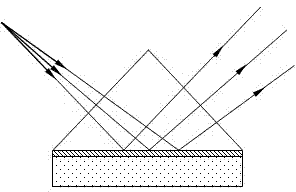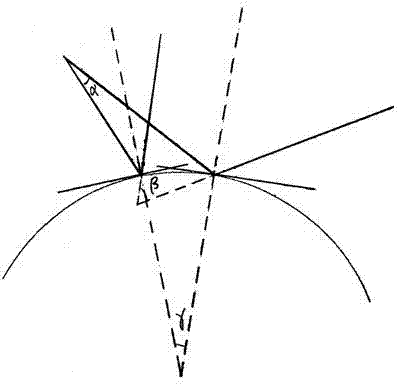Surface plasma resonance optical waveguide sensor based on dual reflectors
A surface plasmon and double-reflector technology, applied in instruments, scientific instruments, and material analysis through optical means, can solve problems such as high cost and bulky devices, achieve high sensitivity, increase sensitivity, and increase divergence angle Effect
- Summary
- Abstract
- Description
- Claims
- Application Information
AI Technical Summary
Problems solved by technology
Method used
Image
Examples
Embodiment Construction
[0017] The optical sensor is based on the principle of surface plasmon resonance technology. When light is incident on the medium-metal-substance interface, evanescent waves will be generated when the incident angle satisfies the total reflection condition, and at a certain incident angle (if the wavelength is fixed), the evanescent wave satisfies the resonance condition, Thus, surface plasmon waves are excited. The refractive index of the measured substance is related to the resonance angle. When the refractive index of the measured substance is changed, the resonance angle of the excited surface plasmon wave will change accordingly, so we can infer the measured substance through the shift of the resonance angle. changes in the refractive index.
[0018] The present invention will be further described below in conjunction with the accompanying drawings and embodiments.
[0019] Such as Figure 2-5 As shown, the surface plasmon resonance optical waveguide sensor based on th...
PUM
| Property | Measurement | Unit |
|---|---|---|
| height | aaaaa | aaaaa |
| width | aaaaa | aaaaa |
| refractive index | aaaaa | aaaaa |
Abstract
Description
Claims
Application Information
 Login to View More
Login to View More - R&D
- Intellectual Property
- Life Sciences
- Materials
- Tech Scout
- Unparalleled Data Quality
- Higher Quality Content
- 60% Fewer Hallucinations
Browse by: Latest US Patents, China's latest patents, Technical Efficacy Thesaurus, Application Domain, Technology Topic, Popular Technical Reports.
© 2025 PatSnap. All rights reserved.Legal|Privacy policy|Modern Slavery Act Transparency Statement|Sitemap|About US| Contact US: help@patsnap.com



